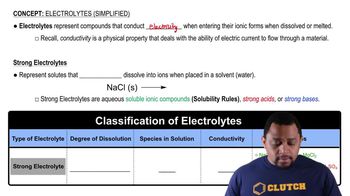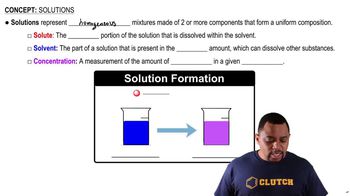Which of the following represents a non-electrolyte?
a) (CH3)2NH2 b) NaOH c) HIO3 d) C2H5OH e) CsNH2
 Verified step by step guidance
Verified step by step guidance Verified video answer for a similar problem:
Verified video answer for a similar problem:



 2:38m
2:38mMaster Electrolytes (Simplified) Concept 1 with a bite sized video explanation from Jules
Start learning